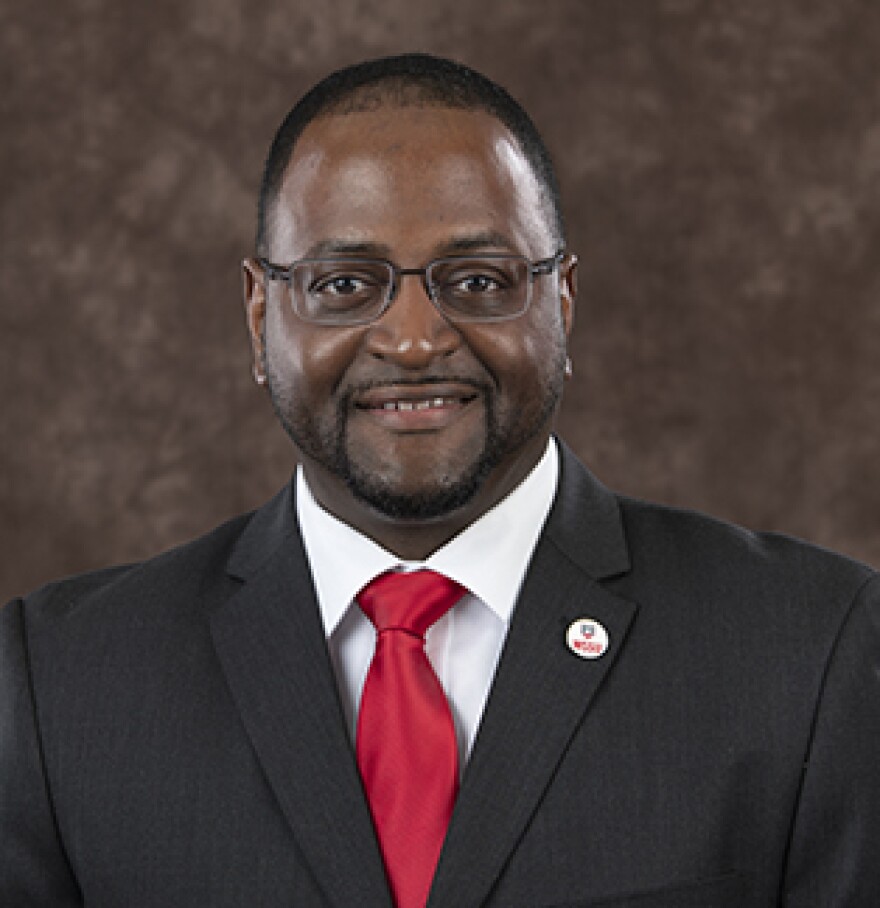Just over a year ago, a task force convened by Gov. Roy Cooper issued a list of changes needed to diversify North Carolina’s teaching corps.
“With racially and ethnically diverse students emerging as the majority population in our K-12 public schools, it is vital that our educator workforce reflect the students whom they serve,” wrote Anthony Graham, provost at Winston-Salem State University, who chaired the panel. “Research shows that all students, but particularly students of color, experience benefits when taught by teachers of color.”
White students make up 47% of the state’s public school enrollment, while 79% of the state’s teachers are white, according to the 2021 report from the Developing a Representative and Inclusive Vision for Education panel, known as DRIVE.
Latinos are especially underrepresented, accounting for 19% of students and only 3% of teachers statewide. In Charlotte-Mecklenburg Schools, which has the state’s largest Latino student population, 28.5% of students and only 2% of teachers are Latino.
Last February, the North Carolina Department of Public Instruction told the state Board of Education that the percentage of Latino educators hasn’t changed significantly in the last five years. If current trends remain unchanged, it would take more than 90 years to bring Latino educators to levels that match the student population, that report concluded.
Statewide, 25% of students and 15% of teachers are Black. In CMS, 36% of students and 30% of teachers are Black.

Graham writes that people of color are less likely than white peers to enter the teaching profession and more likely to leave it. That creates a troubling cycle, as students who don’t see people like them in front of classrooms conclude that teaching is not for them, he says.
“To disrupt a system that has historically failed to prepare and retain a sufficient supply of educators of color, we must acknowledge its racist history and chart an ambitious new path toward educational equity,” Graham wrote.
The task force started its work shortly before the pandemic hit. Task force member Leroy Wray, of Charlotte, who used to work in recruitment for UNC Asheville’s college of education, says COVID-19 made it much harder to recruit college students in general but also made people realize the importance of classroom teachers.
Take it in phases
The task force concluded that creating a truly diverse and equitable cadre of educators will take years but that some strategies can begin almost immediately.
Among the starting points is a call for an annual educator diversity report. Tom Tomberlin, director of educator recruitment and support for the state Department of Public Instruction, says his staff will present such a report at the March Board of Education meeting.
Over the next couple of years, the task force also wants to see schools create programs that expose diverse students to careers in education, launch a statewide marketing campaign for educators of color, help community college students move into education schools and build support systems for educators of color as they move through college, licensure and classroom careers.
The panel also calls for creating more partnerships like the one between CMS and UNC Charlotte, which offers high school students a chance to earn tuition-free college credits while preparing to become teachers. Students from across the county can apply for the Charlotte Teacher Early College high school on the UNC Charlotte campus. This year, the school has about 200 students and just over 85% are students of color.
Revise licensing and boost pay
Over the next five years, the DRIVE group recommends creating alternative paths to licensure, saying the teacher certification exams are one of the most frequently cited barriers.
“Due to unequal access to foundational knowledge and lack of exposure to test-taking strategies, which starts in the K-12 setting, educators of color are at a disadvantage when taking educator licensing exams,” the report states. “Further, some have argued that cultural biases that are embedded in the assessments, as well as the cost of the test itself, create additional challenges for aspiring educators of color.”
The DRIVE group also calls for raising teacher pay across the board to make North Carolina more competitive and paying educators of color for extra duties they’re expected to take on. For instance, Latino teachers say they’re often asked to translate material and help colleagues who don’t speak Spanish connect with parents who don’t speak English. Black male educators are often expected to take on discipline roles, the group reports.
The DRIVE group didn’t disband after issuing the report. They’ve now broken into committees to follow up with cost estimates and efforts to mobilize action. EdNC reports that a DRIVE summit is in the works for this spring, part of a bigger push to highlight the need for teacher diversity.



